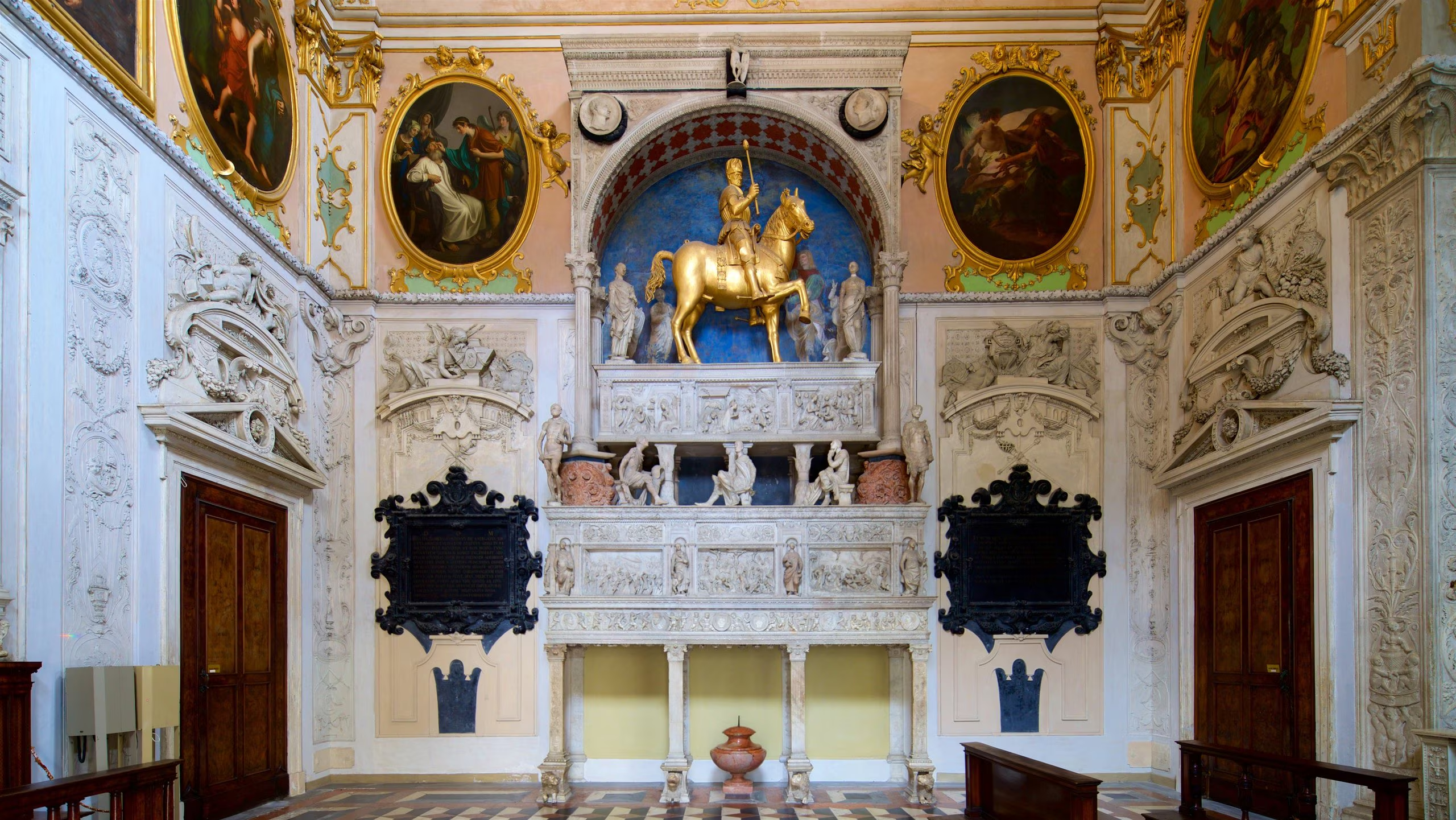Nestled in the heart of Bergamo’s Città Alta, the Cappella Colleoni stands as one of the city’s most stunning Renaissance landmarks. This ornate chapel is not only an architectural masterpiece but also a symbol of power and legacy, built by the renowned condottiero Bartolomeo Colleoni. Adorned with intricate marble facades and housing exquisite art, the Cappella Colleoni is a testament to the grandeur of the Renaissance period and remains a must-see attraction for those visiting Bergamo.
Historical Background
The Cappella Colleoni was commissioned by Bartolomeo Colleoni, one of the most prominent military leaders of the 15th century. Colleoni was a commander for the Republic of Venice and was known for his military prowess and strategic brilliance. In 1472, he commissioned the construction of the chapel as his personal mausoleum, choosing a site adjacent to the Basilica di Santa Maria Maggiore, where an older sacristy stood. Colleoni’s decision to demolish part of the basilica to build his chapel reflected his desire for power and prestige, ensuring that his memory would be eternally enshrined in one of Bergamo’s most prominent locations.
The architect Giovanni Antonio Amadeo was tasked with designing the chapel, and the result is a stunning fusion of Gothic and early Renaissance styles. Construction began in 1472 and was completed within Colleoni’s lifetime, though he passed away in 1475. His tomb, located inside the chapel, became one of the most notable funerary monuments of the period.
Architectural Highlights
The exterior of the Cappella Colleoni is one of the most striking examples of Renaissance architecture in Lombardy. The facade is adorned with a harmonious mix of white, red, and black marble, arranged in intricate geometric patterns. This decorative use of colored marble makes the chapel immediately stand out, especially in contrast to the adjacent Basilica di Santa Maria Maggiore. The facade is further embellished with reliefs, including depictions of saints, biblical scenes, and Colleoni’s family coat of arms, which prominently features three testicles—according to legend, Bartolomeo Colleoni suffered from polyorchidism, that is, he had three testicles—, an unusual symbol that has become a point of curiosity for visitors and historians alike.

Above the entrance is a magnificent rose window, further showcasing the chapel’s Gothic influences. The combination of Renaissance artistry and Gothic architectural elements creates a unique visual spectacle that draws the eye and invites admiration from those who pass by.
Interior Design and Artworks
While the exterior is grand, the interior of the Cappella Colleoni is equally impressive, albeit more intimate in scale. Upon entering, visitors are greeted by Colleoni’s elaborate sarcophagus, which dominates the central space. The sarcophagus is adorned with intricately carved reliefs depicting scenes from the life of Christ and other biblical episodes, crafted with great attention to detail and artistry. Atop the sarcophagus lies a statue of Bartolomeo Colleoni himself, portrayed in armor, symbolizing his role as a fearless military leader.
Another key feature inside the chapel is the tomb of Medea Colleoni, Bartolomeo’s beloved daughter. The tomb is a poignant piece, showcasing the tenderness of Colleoni’s fatherly love in contrast to his otherwise hardened military reputation. It features a delicate carving of Medea, highlighting the refined craftsmanship that defines the chapel’s interior.
The ceiling of the chapel is adorned with beautiful frescoes by Giambattista Tiepolo, one of the most celebrated Venetian painters of the 18th century. These frescoes, although added centuries after the chapel’s construction, further elevate the artistic significance of the site, blending Baroque exuberance with the chapel’s original Renaissance design. The frescoes depict allegorical figures and heavenly scenes, enhancing the spiritual atmosphere of the space.
Cultural Significance
The Cappella Colleoni remains a symbol of the Renaissance spirit in Bergamo, embodying the ambition, wealth, and cultural sophistication of Bartolomeo Colleoni. Its unique architecture and artistic treasures have made it one of Bergamo’s most iconic landmarks, attracting art and history enthusiasts from around the world. The chapel is also an important site for the study of Renaissance funerary art and architecture, as it exemplifies the blend of personal legacy and artistic patronage that characterized the era.
Today, the chapel continues to serve as a place of remembrance for Colleoni and his family, as well as a revered site for visitors seeking to connect with the grandeur of Bergamo’s Renaissance past.

The Cappella Colleoni stands as a testament to both the artistic brilliance of the Renaissance and the powerful legacy of Bartolomeo Colleoni. Its exquisite marble facade, stunning interior frescoes, and beautifully crafted sarcophagi make it a highlight of any visit to Bergamo’s Città Alta. Whether you are an admirer of Renaissance art, an architecture enthusiast, or simply someone who appreciates history, the Cappella Colleoni offers a profound glimpse into the life and times of one of Bergamo’s most influential figures.

